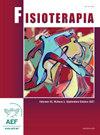Complex Regional Pain Syndrome Type I and risk factors in adult population: A systematic review
Q4 Health Professions
引用次数: 0
Abstract
Introduction
Complex Regional Pain Syndrome Type I (CRPS-I) is a chronic and debilitating condition characterized by unclear pathophysiology and controversial treatment options. This study aims to identify specific factors associated with CRPS-I development.
Methods
A systematic review was conducted following the PRISMA guidelines. An extensive electronic search was performed across six databases: MEDLINE, Cochrane, Google Scholar, Web of Science, Scopus, and Embase. Only case–control and cohort studies that identified CRPS-I adult patients’ risk factors were included. Out of 708 initially identified studies, 9 met the eligibility criteria. The risk of bias was assessed using the Newcastle–Ottawa scale.
Results
The review identified 13 distinct variables related to CRPS-I development. Key factors included upper limb fractures with high pain levels (over 5/10 on a numeric rating scale), significantly associated with increased CRPS-I risk (OR: 3.6). Additional significant risk factors included female gender and comorbidities like migraines (OR: 2.7), fibromyalgia (OR: 2.5), and rheumatoid arthritis (OR: 2.1). Fracture characteristics, such as high-impact injuries or open surgical reductions, were also contributing factors (OR: 1.3). Psychological, genetic, and metabolic factors also played roles in CRPS-I development.
Conclusion
Despite the low risk of bias in the included studies, the results were inconsistent for a meta-analysis, highlighting the need for further research to clarify these associations. The review emphasizes the importance of fracture management, hormonal influences, and genetic predispositions in CRPS-I. Future research should explore genetic, hormonal, and inflammatory interactions to enhance understanding and treatment strategies for CRPS-I.
成人复杂区域疼痛综合征I型及其危险因素:系统综述
复杂区域疼痛综合征I型(CRPS-I)是一种慢性衰弱性疾病,其病理生理机制不明确,治疗方案也存在争议。本研究旨在确定与CRPS-I发展相关的特定因素。方法按照PRISMA指南进行系统评价。在MEDLINE、Cochrane、b谷歌Scholar、Web of Science、Scopus和Embase六个数据库中进行了广泛的电子搜索。仅纳入了确定CRPS-I成年患者危险因素的病例对照和队列研究。在最初确定的708项研究中,有9项符合资格标准。偏倚风险采用纽卡斯尔-渥太华量表进行评估。结果本综述确定了与CRPS-I发展相关的13个不同变量。关键因素包括上肢骨折伴高疼痛程度(数值评分超过5/10),与CRPS-I风险增加显著相关(OR: 3.6)。其他重要的危险因素包括女性和合并症,如偏头痛(OR: 2.7)、纤维肌痛(OR: 2.5)和类风湿性关节炎(OR: 2.1)。骨折特征,如高冲击力损伤或开放性手术复位,也是影响因素(or: 1.3)。心理、遗传和代谢因素也在crps - 1的发展中发挥作用。结论:尽管纳入的研究偏倚风险较低,但荟萃分析的结果不一致,强调需要进一步研究来澄清这些关联。这篇综述强调了骨折处理、激素影响和遗传易感性在CRPS-I中的重要性。未来的研究应探索遗传、激素和炎症的相互作用,以提高对CRPS-I的理解和治疗策略。
本文章由计算机程序翻译,如有差异,请以英文原文为准。
求助全文
约1分钟内获得全文
求助全文
来源期刊

Fisioterapia
Health Professions-Physical Therapy, Sports Therapy and Rehabilitation
CiteScore
0.50
自引率
0.00%
发文量
37
期刊介绍:
Publicación Oficial de la Sociedad Española de Fisioterapeutas. Sus páginas ofrecen desde artículos originales hasta revisiones, pasando por el estudio de casos o los actos más importantes relacionados con la especialidad.
 求助内容:
求助内容: 应助结果提醒方式:
应助结果提醒方式:


